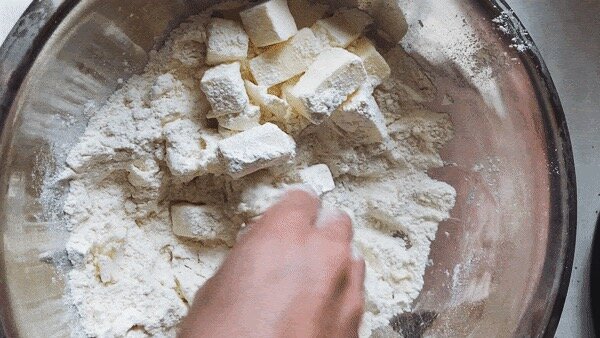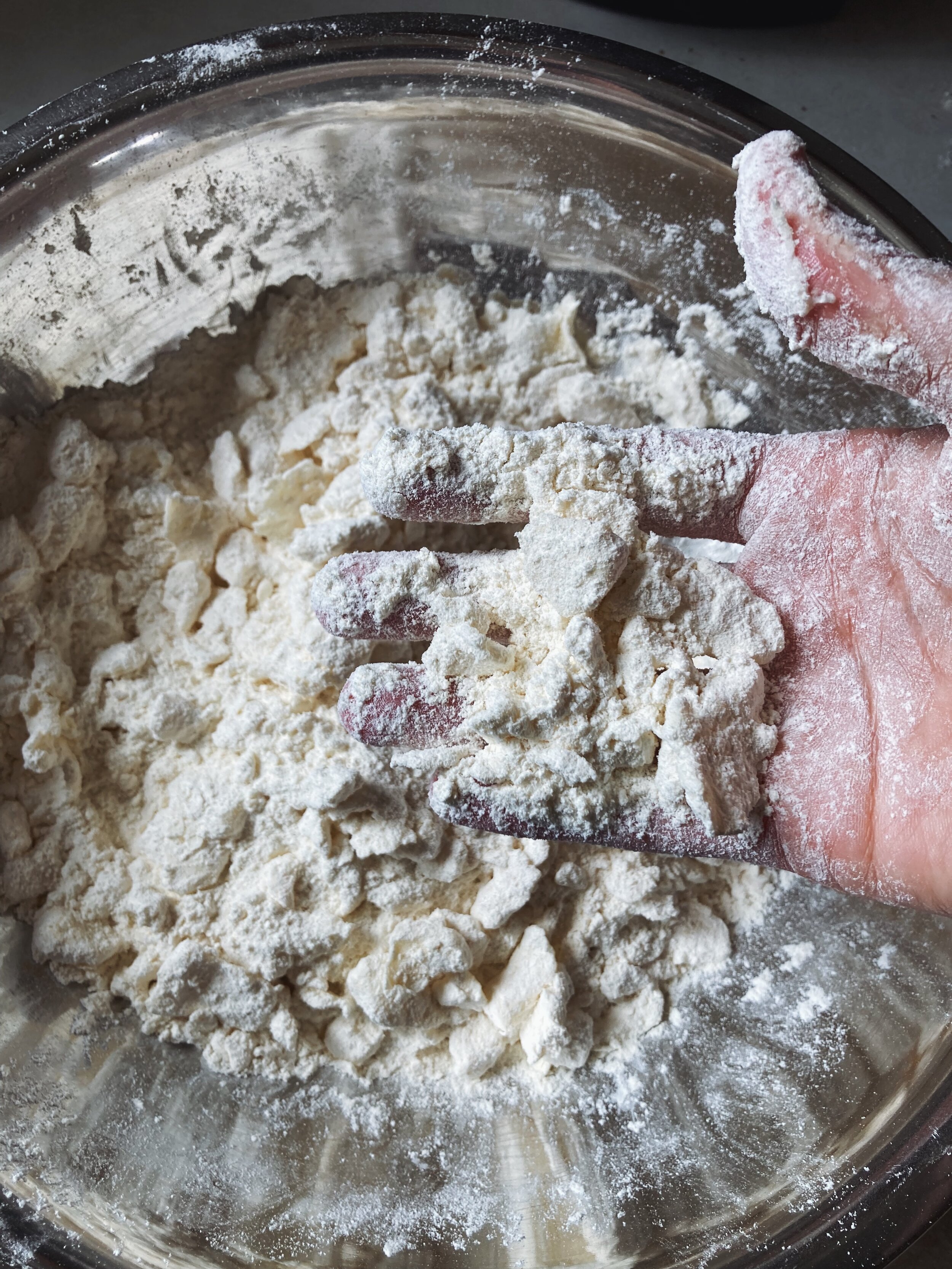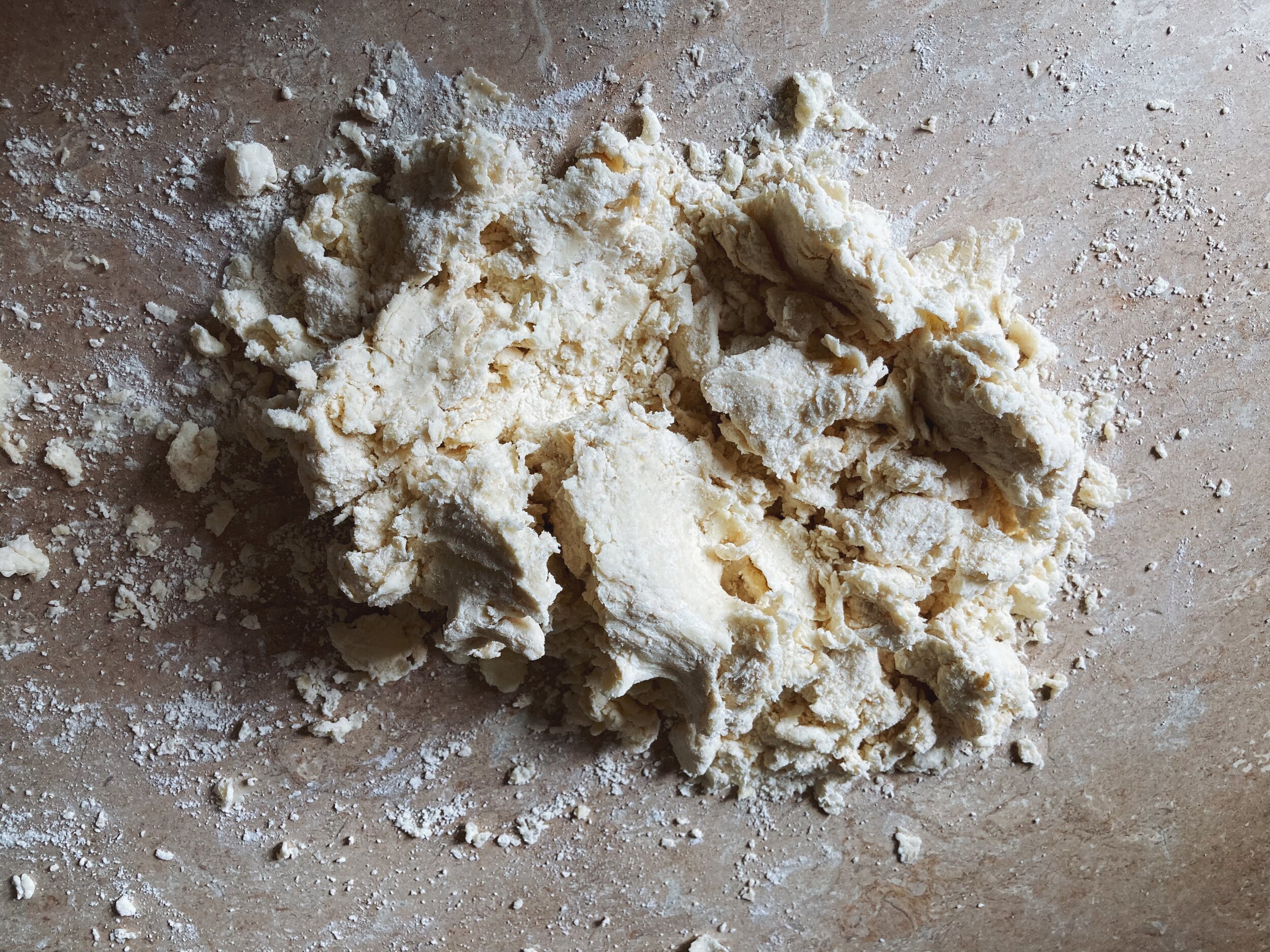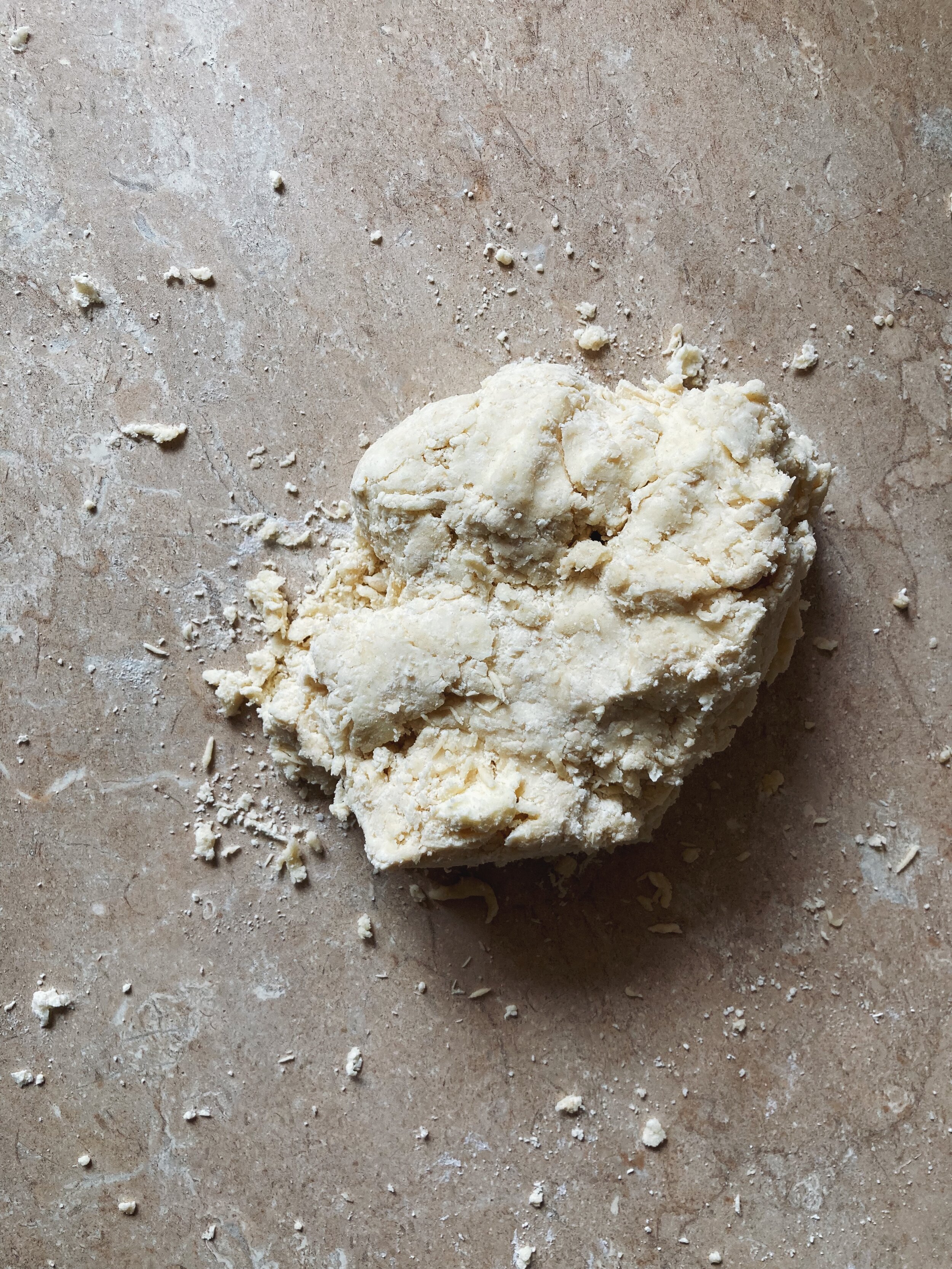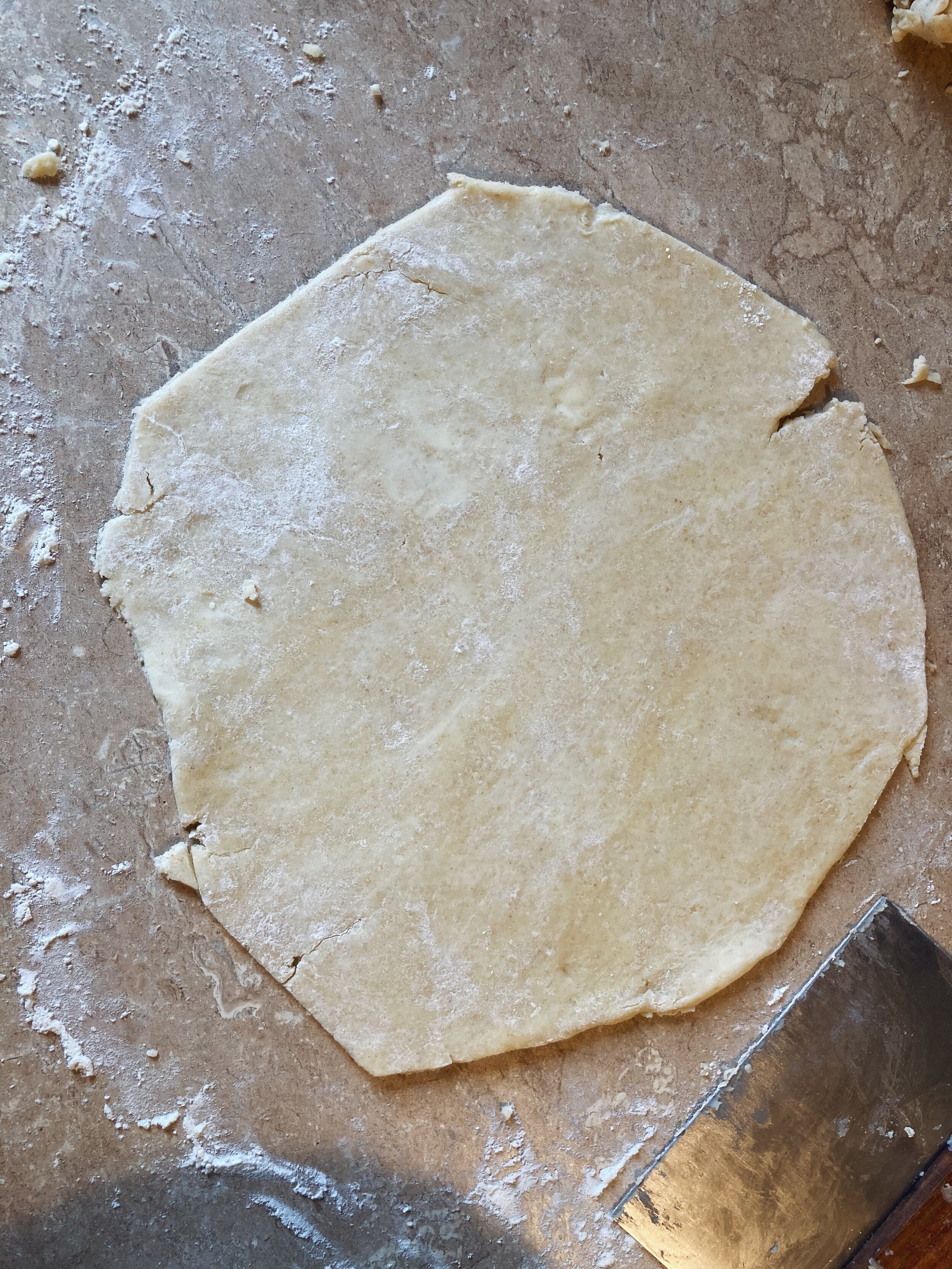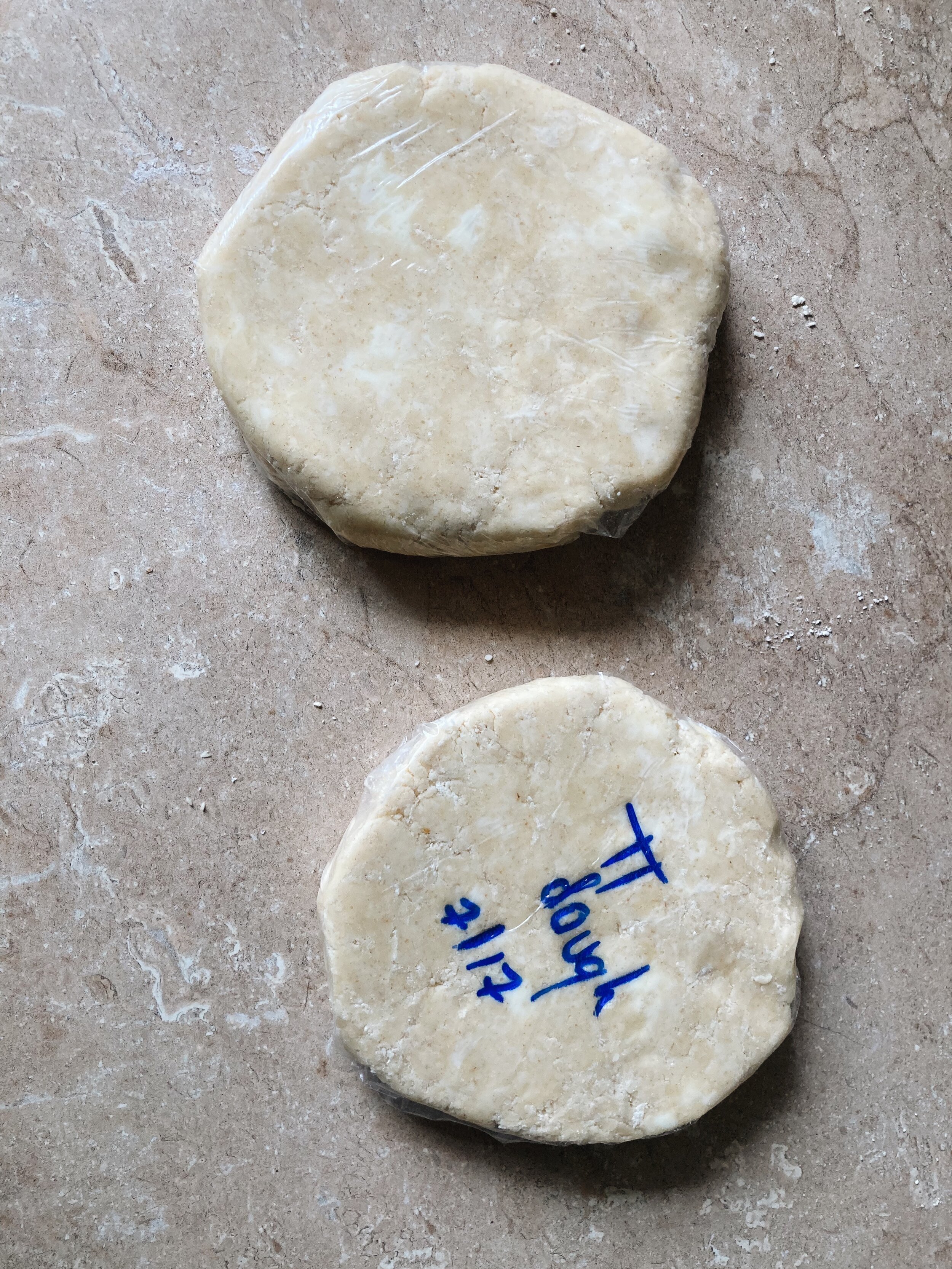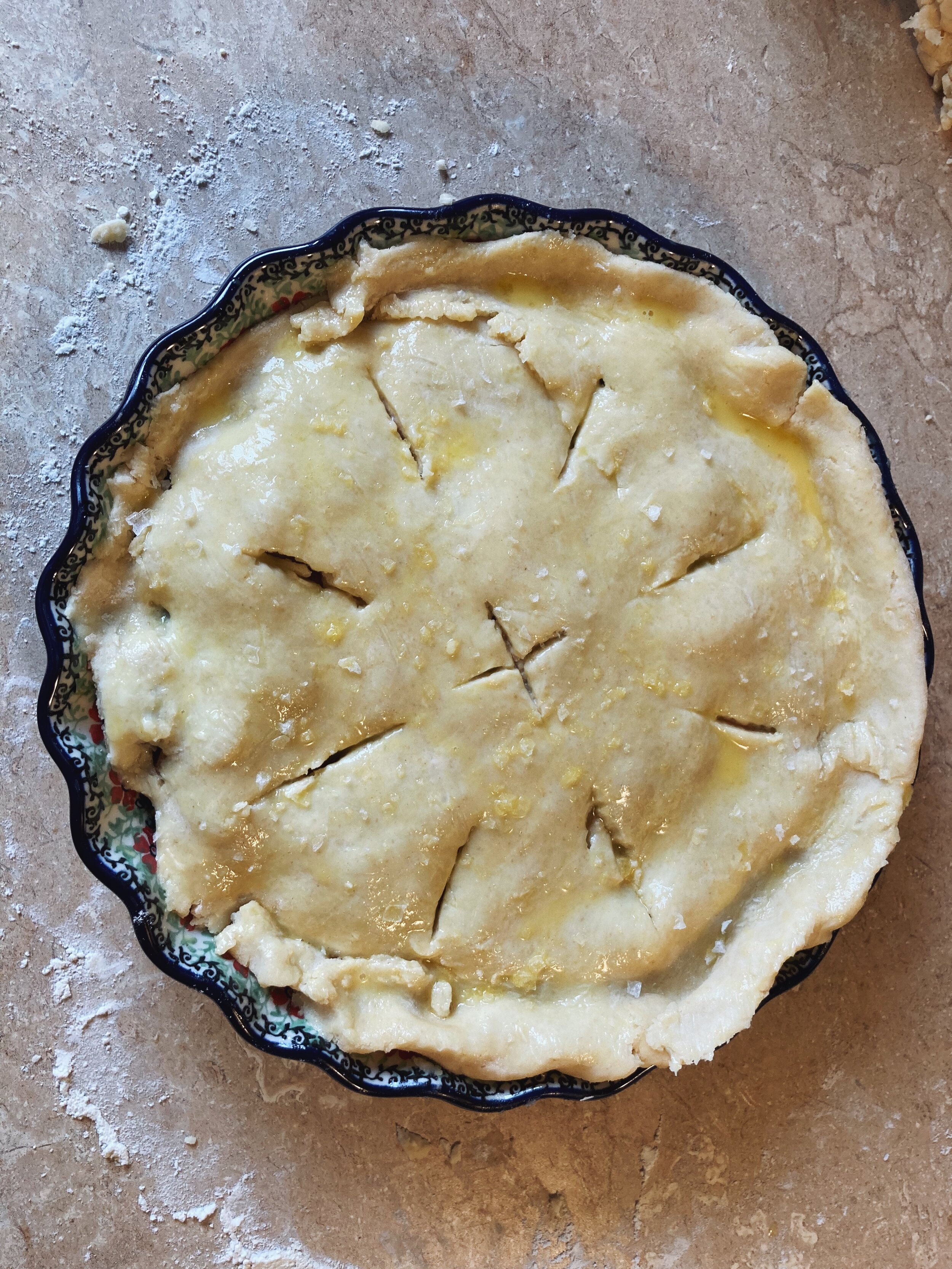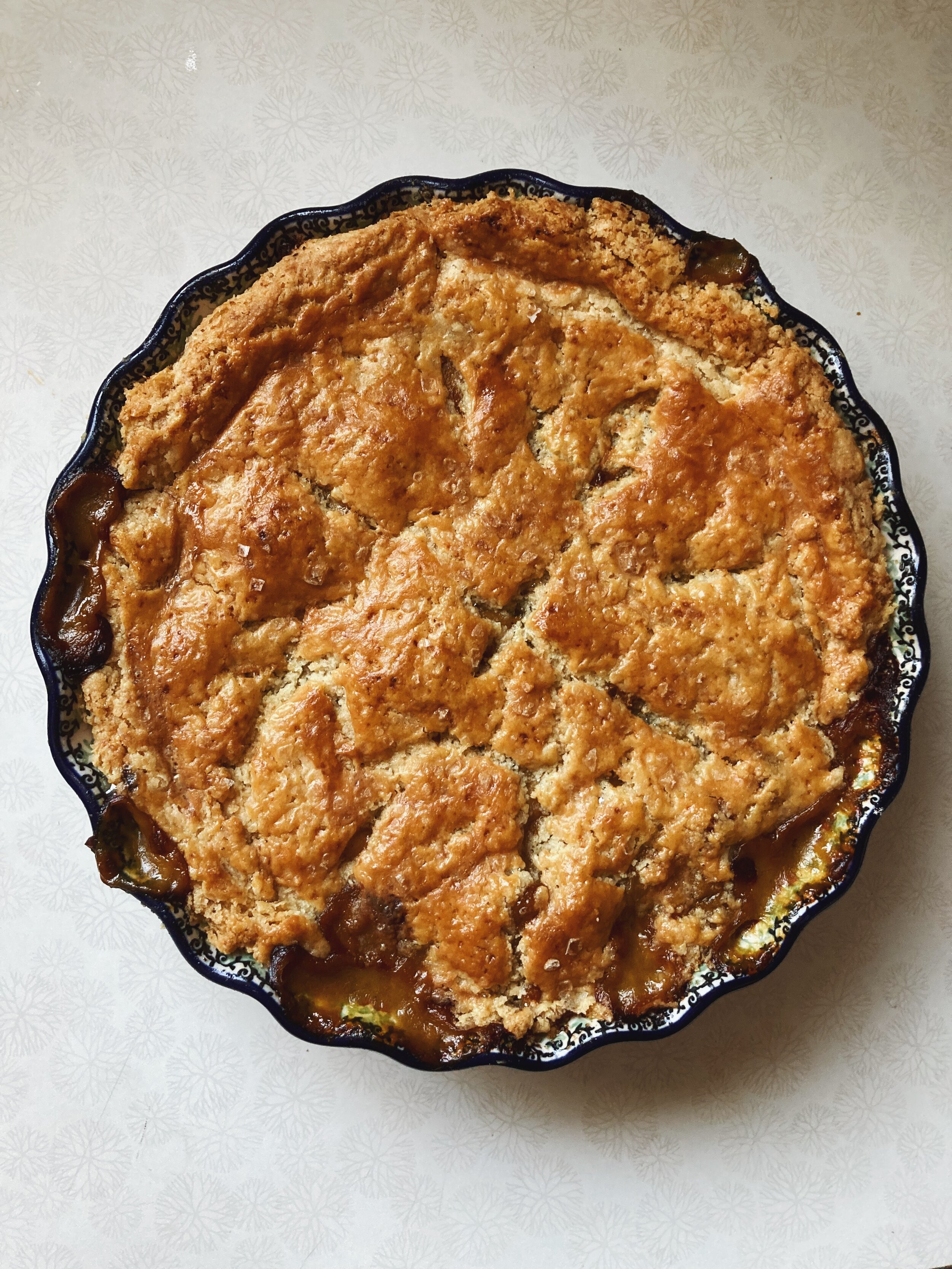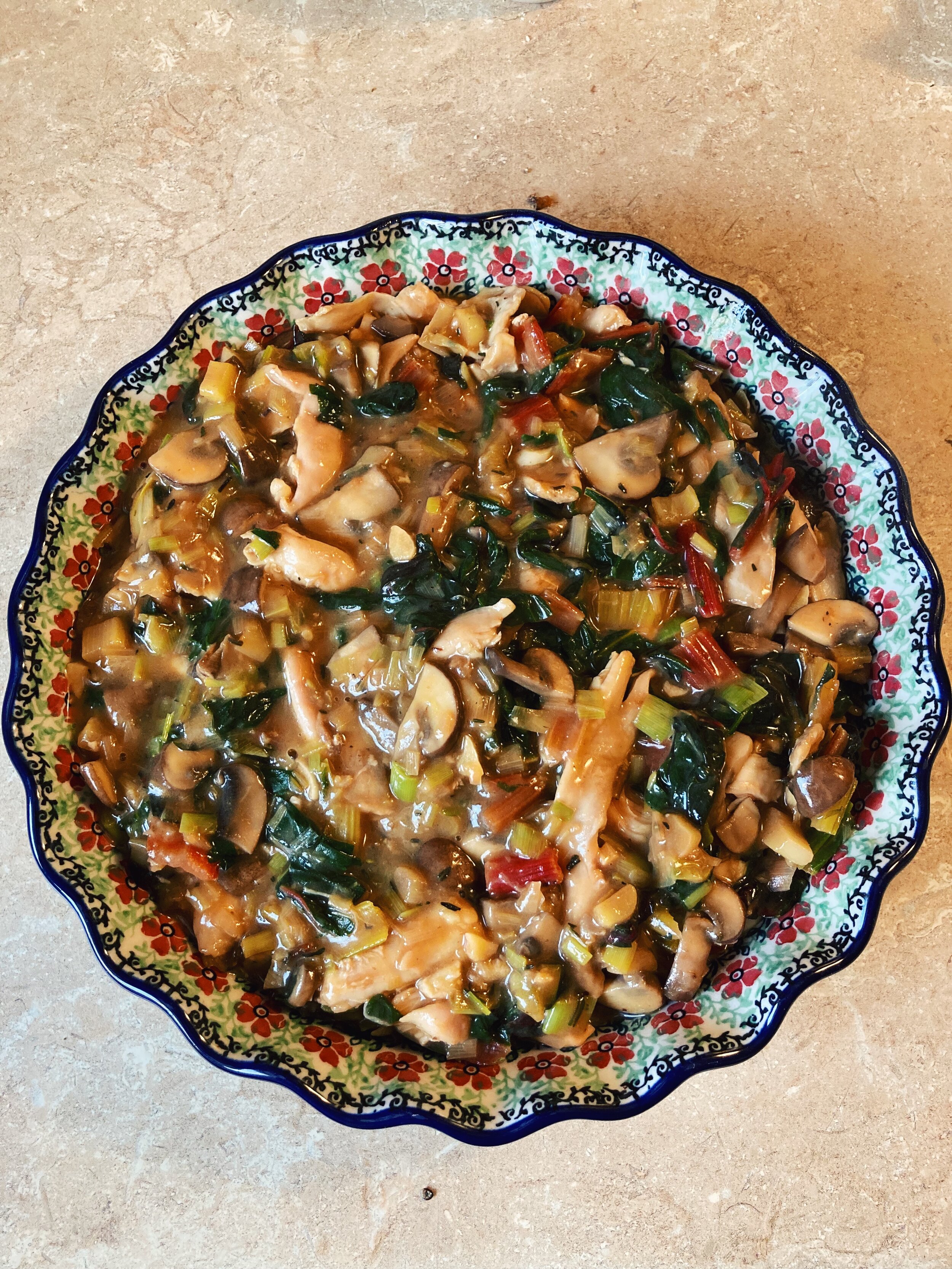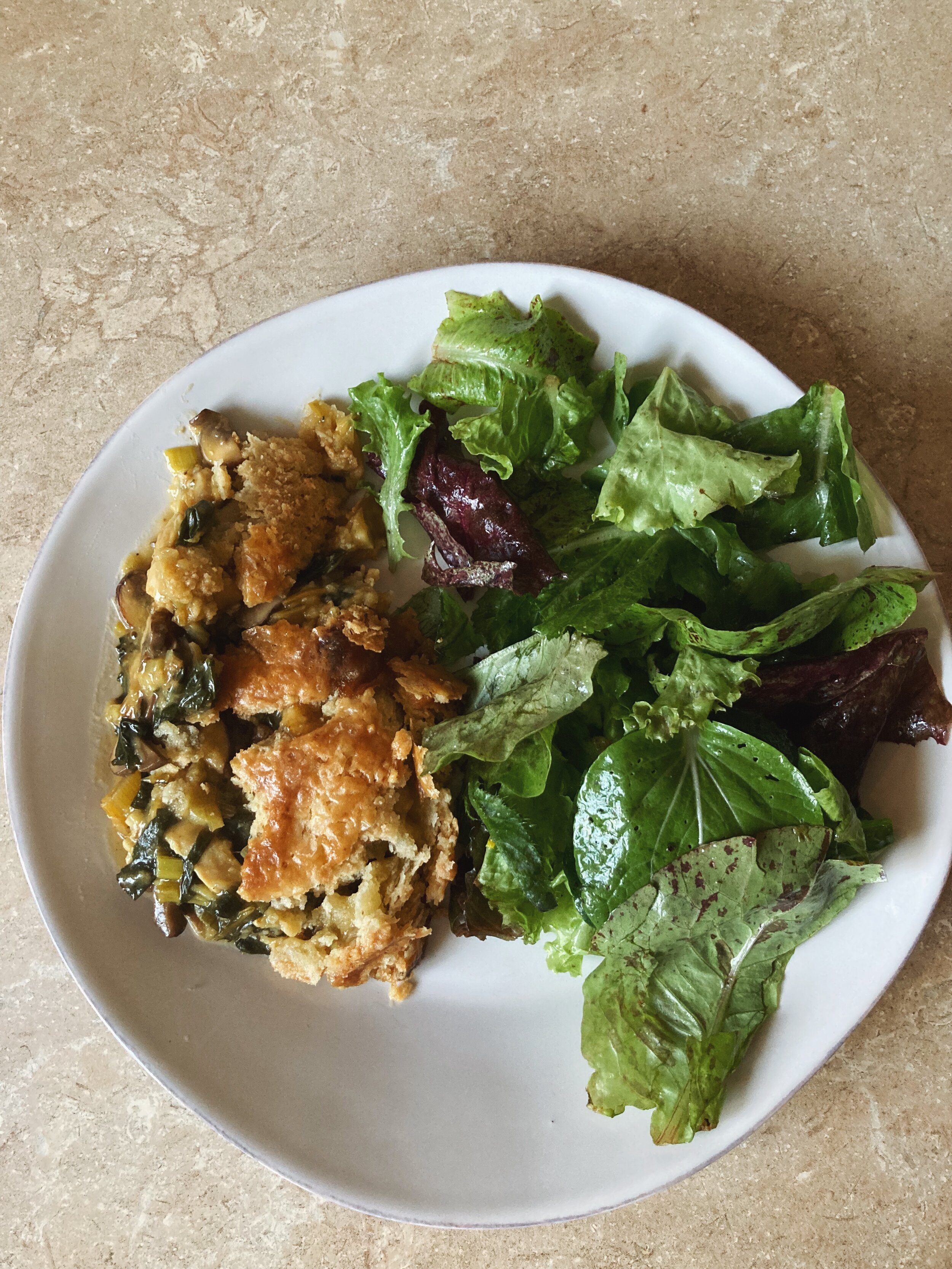Margaret, my dear friend who I mention frequently on this blog, has generously made and reviewed Alison’s pie crust recipe. Due to my gluten intolerance, there wasn’t a way for me to keep the integrity of this recipe AND eat it. So I asked Margaret, queen of pies, to do the honors. What a TREAT this post is. Margaret knows her pie crust, so listen up….
Pie crust recipes are everywhere. Everyone has their own method, and the recipe is more of a shorthand for that method than any kind of unique formula. The key players are flour, butter, salt, and water, with recurring guest stars sugar and vinegar. If you see eggs on the ingredient list, keep looking. If the recipe doesn’t mention keeping things cold, run. And if anyone tells you it’ll always be the same precise proportion of ingredients, give that recipe writer the side eye. Pie crust is about feeling your way through a bunch of decisions about variables, and it’s a little different every time.
Here’s what I like about Alison’s recipe:
She acknowledges the need for flexibility and restraint. There’s a guideline for how much water you’ll need and advice about how much wiggle room you should allow within that quantity, and she tells you to add less than you think. Smart.
She specifies that ingredients need to be chilled. Pie crust is a greasy mess when they’re not, so this is critical.
She has you rest the dough. Any dough involving gluten (so, pie crusts, bread doughs, even cookies) benefits from a rest before rolling. Just like when a person gets worked up, sitting in a cool, quiet room for an hour allows the dough to relax and limber up for the next event. In addition, this gives moisture a chance to distribute itself evenly among all the little bits of flour so you don’t end up with crumbly bits at the perimeter of the dough.
Here’s what I wish Alison did differently:
Cut the butter smaller. She has you cut it into 1-inch pieces, which just makes a little more work for your hands when you incorporate it into the flour. Hands are hot. Knives are cool. Cutting butter smaller = less warming up of the butter as you rub it in. (Pie math!)
Get the palms OUTTA there. I don’t understand why Alison tells you to smash the butter between palms and fingertips and later, to knead the dough with your palms. Fingertips stay cool, but palms are hot. Keep! It! Cold! I like to crush the cubes of butter with a motion akin to aggressively rubbing a dog’s ear, tossing the exposed butter in flour every few seconds. (Picked up that tip from my main science dude Alton Brown.) See? ^^^
Keep the flour-butter mixture in the bowl. WHY do we have to dump it out on the counter? This just means I’m chasing flour and water around the counter as I work. I think keeping it in the bowl makes it easier to toss with your fingertips (see notes on palms, above) and helps the water find its way to the floury bits. I added a little more water than I meant to in making this because it was harder to mix it all together evenly on the counter.
Give a clue for when you’ve added enough water. I follow the rule that if you can squeeze a clump of dough in your fingertips and it mostly holds together, you’re done.
The recipe makes two discs, so one went in my freezer, and I rolled out the other to make a lid for a little skillet pie with some mushrooms and rainbow chard I got at the farmer’s market this morning with a friend (summer, amirite?).
Rolling out the dough was a little tricky. It was a hot Michigan summer day, and the larger chunks of butter that remained got a little soft and stuck to the rolling pin a bit, but the dough sort of fused back together in the oven, hiding a couple cracks in the crust. Using Alison’s skillet mushroom and chicken pie as a guide, I brushed the crust with egg wash and baked it at 425, but not before sprinkling it with some flaky salt for extra crunch.
In the end, the crust had superior flakiness and was very, very buttery. It’s delicious, but I might dial back the butter just a bit for warmer months when I want a lighter meal. Alison goes full throttle on flavor, and the salt was no exception; if I foresee wanting to sprinkle flaky salt on top again, I might reduce the quantity in the dough. All that being said, this is a totally delicious pie crust. I don’t know that I’d call it the only pie crust you’ll ever want, but you could certainly make it so if rich, buttery pie crust is up your alley.
107 AND 108 recipes cooked, 117 to go. This recipe appears in both cookbooks, and thus, it counts for two recipes.
And now, back to Annie for regularly scheduled A&A content!


